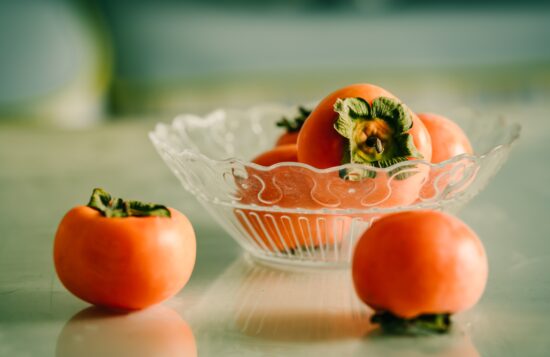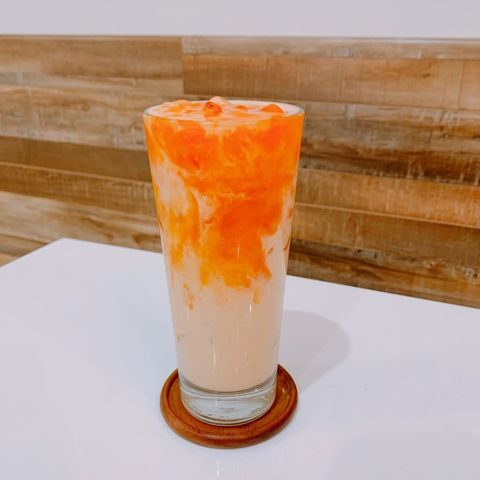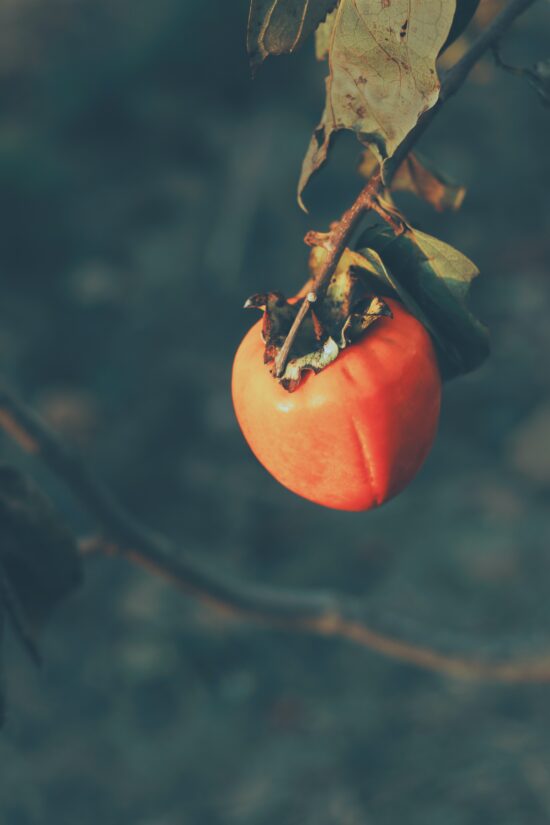![1_persimmon_cover_photo[1] A single persimmon fruit hangs from a tree branch. The fruit is small and orange with brownish leaves sticking out of the top. It looks something like an orange tomato or apricot.](https://www.baristamagazine.com/wp-content/uploads/2022/09/1_persimmon_cover_photo1-678x381.jpg)
For many, the persimmon marks the arrival of autumn. The seasonal fruit has a storied legacy and makes a unique, fall-inspired addition to café menus.
BY EMILY MENESES
SENIOR ONLINE CONTRIBUTOR
Cover photo by Ricardo L via Unsplash
Fall has arrived, and with it, the persimmon will soon reappear, officially solidifying the change of the seasons. In this installment of “Know Your Ingredients,“ we’re exploring the origins of this autumnal fruit, the ways in which it’s used around the world, and how cafés are incorporating it into their fall menus.
The persimmon’s journey around the globe
The persimmon originated in China, where there are over 2,000 different varieties. Persimmon trees eventually made their way from China to Japan and other parts of Asia, then found their way to the Western world.
Subtle and floral, persimmon has a flavor similar to that of a cantaloupe, and it’s used in a variety of ways across a multitude of cultures. The most prominent varieties of persimmon are hachiya and fuyu. Hachiya persimmons are distinguishable by their pointy tip and are best eaten when slightly overripe and soft. Fuyu persimmons, on the other hand, are short and round and are typically eaten when firm and crisp, with a texture similar to that of an apple or a pear.
Persimmon trees thrive in places with mild summers and winters, and they can grow to be up to 25 feet tall. The trees flower in March and bear fruit from October through January, which is why persimmon is known as an autumn delicacy.

Traditional Uses of Persimmon
In Japan, traditional autumn rituals include the making of hoshigaki: sweet dried persimmons. Hoshigaki is made by hanging persimmons to dry for about four to six weeks. Every day, each persimmon is lightly massaged until its sugars have naturally crystallized on its surface. The white, chalky layer of sugar that forms on the outside of the persimmon signifies that the hoshigaki is ready to eat.

syrup in-house. Photo courtesy of Cafe de Mama.
Persimmon in Café Drinks
Though commonly eaten alone or used in salads, bread, cookies, and other baked goods, persimmon also makes a unique seasonal addition to coffee and tea. Los Angeles-based Cafe De Mama, for example, serves persimmon milk every year, infused with house-made persimmon syrup and available with or without espresso.
“Our drinks were created as a way to combine traditional and popular flavors of Korea into a cup,” the café shares, “so that some of our customers can try new flavors, while others can [have] flavors reminiscent of home.” The café’s menu also features other traditional Korean flavors like injeolmi (sweet rice cake) and black sesame. These ingredients add a unique touch of depth and warmth to their beverages.
Should you run into persimmon on your next trip to the grocery store or farmers market, try your hand at making hoshigaki, or try making a persimmon compote to add to your coffee. This fruit only comes once a year, so enjoy it and bask in the season!
ABOUT THE AUTHOR
Based in Los Angeles, Emily Joy Meneses (she/her) is a writer and musician passionate about culture and collective care. You can regularly find her at Echo Park Lake, drinking a cortado and journaling about astrology, art, Animal Crossing, and her dreams. Explore her poetry, short stories, and soundscapes on her website.





